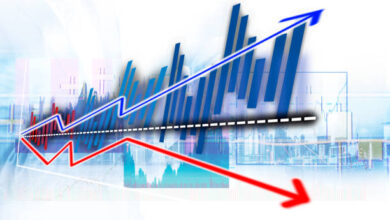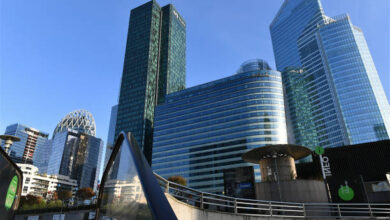Sustainable Development Goals are Essential for Long-Term Economic.
Sustainable Development Goals

As the world continues to grapple with global challenges such as climate change, poverty, and inequality, there is a growing recognition that traditional economic growth models are no longer sufficient. In response, the United Nations has set out 17 Sustainable Development Goals (SDGs) to be achieved by 2030. These goals not only aim to address pressing social and environmental issues, but also recognize the crucial role of sustainable development in promoting long-term economic growth. In this blog post, we will explore why the SDGs (sustainable development goals) are essential for sustainable economic growth and how they can pave the way for a better future for all.
Understanding Sustainable Development Goals (SDGs)
Sustainable Development Goals (SDGs) are a set of ambitious targets outlined by the United Nations to address the pressing challenges faced by our planet and its inhabitants. They encompass a wide range of issues, including poverty eradication, gender equality, clean energy, responsible consumption, and climate action, to name just a few.
The SDGs are not just another list of goals; they represent a fundamental shift in the way we think about development. Unlike previous models that focused solely on economic growth, the SDGs emphasize the interconnectedness of social, economic, and environmental factors. They recognize that sustainable development cannot be achieved without addressing the root causes of inequality, environmental degradation, and social injustice.
By understanding the SDGs, we gain insight into the critical areas that require our attention and collective action. They provide a roadmap for a more inclusive, equitable, and sustainable future for all. Each goal is accompanied by specific targets and indicators, which enable governments, organizations, and individuals to track progress and ensure accountability.
Moreover, the SDGs foster a sense of global solidarity, encouraging countries to work together to achieve these shared objectives. They emphasize the importance of collaboration, partnerships, and innovative approaches to address complex challenges. By understanding the SDGs, we can actively participate in shaping a better future, one that prioritizes the well-being of both people and the planet.
In the next sections, we will explore the relationship between SDGs and economic growth, examine case studies that demonstrate their impact on long-term development, discuss the roles of governments and businesses in promoting the SDGs, and address the challenges we face in achieving these goals.

The Relationship Between Sustainable Development Goals and Economic Growth
The relationship between Sustainable Development Goals (SDGs) and economic growth is crucial in shaping a sustainable and prosperous future for all. The SDGs recognize that traditional economic growth models, which solely focus on increasing GDP, often come at the expense of social and environmental well-being. Instead, they promote a more holistic approach, where economic growth is intertwined with social progress and environmental sustainability.
When pursued in harmony, the SDGs can contribute to economic growth by fostering innovation, driving investment, and creating new job opportunities. For instance, investing in clean energy and infrastructure can stimulate economic activity while reducing carbon emissions. Promoting gender equality and inclusive education can enhance productivity and economic empowerment. Likewise, investing in sustainable agriculture and responsible consumption can improve food security and reduce waste, leading to economic gains.
Moreover, achieving the SDGs can also enhance the resilience of economies. By addressing social inequalities and promoting environmental sustainability, countries can create more stable and inclusive societies, which are less prone to conflict and unrest. This stability is crucial for attracting investments, encouraging entrepreneurship, and fostering sustainable economic development.
In summary, the SDGs and economic growth are not mutually exclusive, but rather interdependent. By integrating social and environmental considerations into economic development, we can create a more inclusive, equitable, and sustainable future. Achieving the SDGs is not only necessary to address global challenges, but also vital for unlocking the full potential of economic growth.

Case Studies: How Sustainable Development Goals Drive Long-Term Economic Growth
Case studies provide tangible evidence of how Sustainable Development Goals (SDGs) can drive long-term economic growth. These real-life examples demonstrate the transformative power of integrating social, economic, and environmental factors into development strategies.
One such case study is Costa Rica’s commitment to environmental sustainability. The country has embraced renewable energy sources and implemented policies to protect its natural resources. As a result, Costa Rica now generates over 98% of its electricity from renewable sources. This transition has not only reduced carbon emissions but has also attracted investments in the renewable energy sector, creating new jobs and stimulating economic growth.
Another example is Sweden’s approach to sustainable transportation. The country has invested in developing an efficient public transport system, promoting cycling and walking, and incentivizing the use of electric vehicles. These initiatives have not only reduced carbon emissions and congestion but have also improved air quality and public health. Additionally, the growth of sustainable transportation industries has created new business opportunities and jobs, contributing to economic growth.
These case studies highlight the symbiotic relationship between SDGs and economic growth. By prioritizing sustainable development, countries can unlock new economic opportunities, improve living standards, and foster long-term prosperity. By sharing and learning from these success stories, we can accelerate progress towards achieving the SDGs and creating a more sustainable and prosperous future for all.

The Role of Governments and Businesses in Promoting (Sustainable Development Goals) SDGs
Governments and businesses play a crucial role in promoting and achieving the Sustainable Development Goals (SDGs). With their resources, influence, and ability to drive change, they have the power to make a significant impact on the path towards a more sustainable future.
Governments have a responsibility to set policies, regulations, and frameworks that prioritize sustainable development. They can create incentives and provide support to businesses that align their operations with the SDGs. For example, governments can offer tax breaks or grants to companies that invest in renewable energy or adopt sustainable practices. They can also implement regulations that promote responsible production and consumption, such as labeling requirements for sustainable products.
In addition to creating an enabling environment, governments can also lead by example. By integrating the SDGs into their own operations and procurement practices, they can demonstrate their commitment to sustainability. Governments can also allocate public funds towards initiatives that advance the SDGs, such as investing in infrastructure projects that promote clean energy or sustainable transportation.
Businesses, on the other hand, have a unique opportunity to drive innovation and transform industries towards sustainable practices. By incorporating the SDGs into their core business strategies, companies can align their operations with the global goals. This can involve implementing sustainable supply chain practices, reducing their carbon footprint, promoting diversity and inclusion, or contributing to social and community development initiatives.
Businesses can also leverage their influence and partnerships to advocate for policy changes that support the SDGs. By engaging with governments, industry associations, and civil society, companies can shape regulations and promote sustainability at a broader level.
Ultimately, the role of governments and businesses in promoting the SDGs is not just about meeting targets or ticking boxes. It is about recognizing the interdependencies between economic growth, social progress, and environmental sustainability. By working together, governments and businesses can drive the transition towards a more inclusive, equitable, and sustainable future for all.

Challenges and Possible Solutions to Achieving SDGs
While the Sustainable Development Goals (SDGs) provide a roadmap for a more sustainable future, there are significant challenges to achieving them. One of the main obstacles is the lack of awareness and understanding surrounding the SDGs. Many individuals and organizations are unaware of the goals and how they can contribute to their achievement. Education and awareness campaigns are crucial in addressing this challenge and engaging a wider audience.
Another challenge is the complexity and interconnectivity of the goals themselves. The 17 SDGs encompass a wide range of issues, and progress in one area often depends on progress in others. This complexity can make it difficult to prioritize and allocate resources effectively. Collaboration and partnerships are essential in addressing this challenge, as they allow for the sharing of knowledge, expertise, and resources.
A third challenge is the financing of SDG initiatives. Achieving the goals requires significant investment, but funding can be limited, especially for developing countries. Innovative financing mechanisms, such as impact investing and public-private partnerships, can help bridge this gap. Additionally, governments and businesses can incorporate the SDGs into their existing budgets and strategies, ensuring that resources are allocated to sustainable development efforts.

Lastly, there is the challenge of monitoring and measuring progress towards the goals. Without accurate data and indicators, it is difficult to track progress, identify gaps, and hold stakeholders accountable. Improving data collection and reporting systems is crucial in addressing this challenge and ensuring that efforts are targeted where they are needed most.
Addressing these challenges requires a collective effort and a commitment to collaboration, innovation, and transparency. By actively working to overcome these obstacles, we can pave the way for the achievement of the SDGs and create a more sustainable and prosperous future for all.






Nice post. I learn something more challenging on different blogs everyday. It will always be stimulating to read content from other writers and practice a little something from their store. I’d prefer to use some with the content on my blog whether you don’t mind. Natually I’ll give you a link on your web blog. Thanks for sharing.
Nice read, I just passed this onto a friend who was doing some research on that. And he just bought me lunch as I found it for him smile Therefore let me rephrase that: Thanks for lunch! “A human being has a natural desire to have more of a good thing than he needs.” by Mark Twain.
You have mentioned very interesting points! ps decent website .
What Is Sumatra Slim Belly Tonic? Sumatra Slim Belly Tonic is a weight loss supplement that targets the root cause of weight gain issues.
I enjoy your writing style genuinely loving this website .
You completed some nice points there. I did a search on the topic and found nearly all folks will go along with with your blog.
I have been surfing on-line more than 3 hours as of late, yet I never discovered any interesting article like yours. It¦s pretty worth sufficient for me. In my opinion, if all website owners and bloggers made just right content as you probably did, the internet will likely be much more helpful than ever before.
I?¦ll right away snatch your rss as I can not to find your email subscription link or newsletter service. Do you have any? Kindly permit me understand so that I could subscribe. Thanks.
Thank you for reaching out to us!
We are here to assist you with your needs and requirements. Please feel free to share the details with us, and our team will be available 24/7 to help you.
You can contact us anytime at: info@zarea2it.com
Looking forward to assisting you!
Best regards,
The Zarea2IT Team